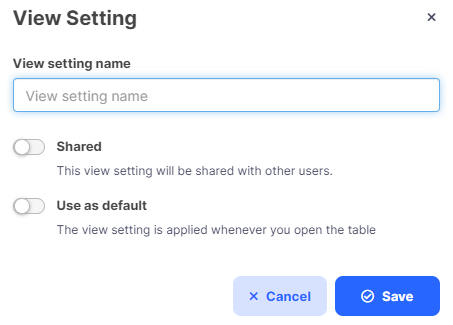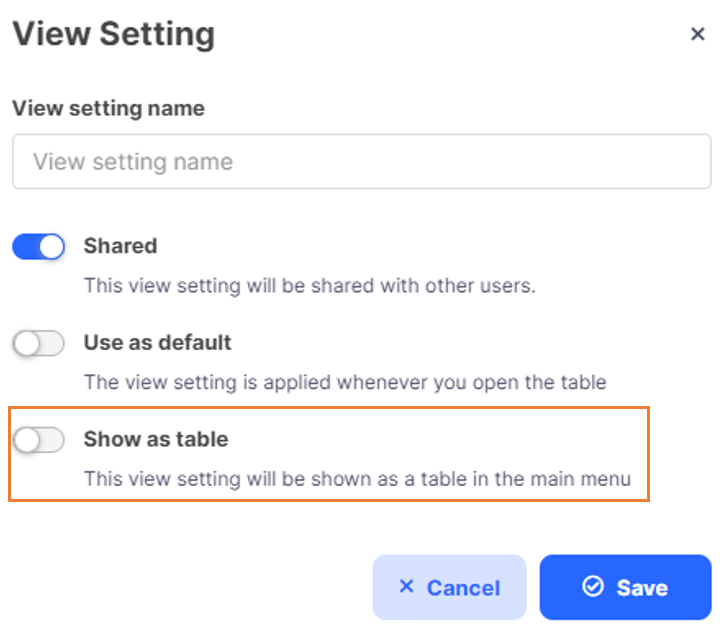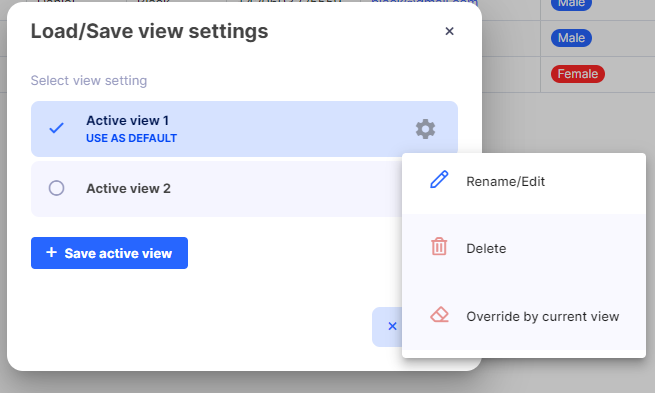Save Active View
How to do that?
- Click on this option in the upper-right corner
 How to Save a New View
How to Save a New View
- Click the View settings icon (gear symbol) in the top-right corner of your table.
- Click on "+ Save active view".
- In the popup:
- Enter a name for your view.
- Optionally enable:
- Shared – visible to all users in the application.
- Use as default – the view will be loaded automatically when opening the table.
- Show as table – if "Shared" is enabled, this will show the saved view as a separate table in the main menu.
Reports are always generated from the source table. The “Show as table” option only creates a shortcut to the same data structure — it does not create a separate report.
- Click Save
Tip: Views that are set as default will be automatically applied when you open the table. "Show as table" is a great feature for building dashboards or simplified views for specific user roles.
How to save the active view as a table
How to Manage Saved Views
When you click on the view settings icon again, you will see a list of your saved views.
From here, you can:
- Switch between views
- Edit a saved view ( Rename/Edit)
- Delete a view ( Delete)
- Override by current view – updates the saved configuration with your current filter/sort/column state
Settings of the saved active view
Summary of Options

Use Cases – When to Use “Save Active View”
1. Role-based dashboards
Manager sees tasks by status and deadline.
Salesperson filters only their leads.
HR views applicants in active stages.
Each user gets a personalized view without extra clicks.
2. Quick access to filtered reports
Save a view with specific filters (e.g. only “Completed” orders).
Use “Show as table” to make it appear as a separate table in the menu.
Create mini reports or dashboards instantly.
3. Reusable complex filters
Hide columns, apply multiple filters, sort records.
Save everything as one active view.
Avoid repeating setup for complex tables.
4. Team meetings / shared views
Save a shared view for weekly standups or sprint boards.
Everyone sees the same data structure.
Ideal for collaboration and consistency.
5. Testing or temporary setups
Create a “debug” or “test” view for temporary use.
Don’t mess with default settings.
Safe environment for experiments.



